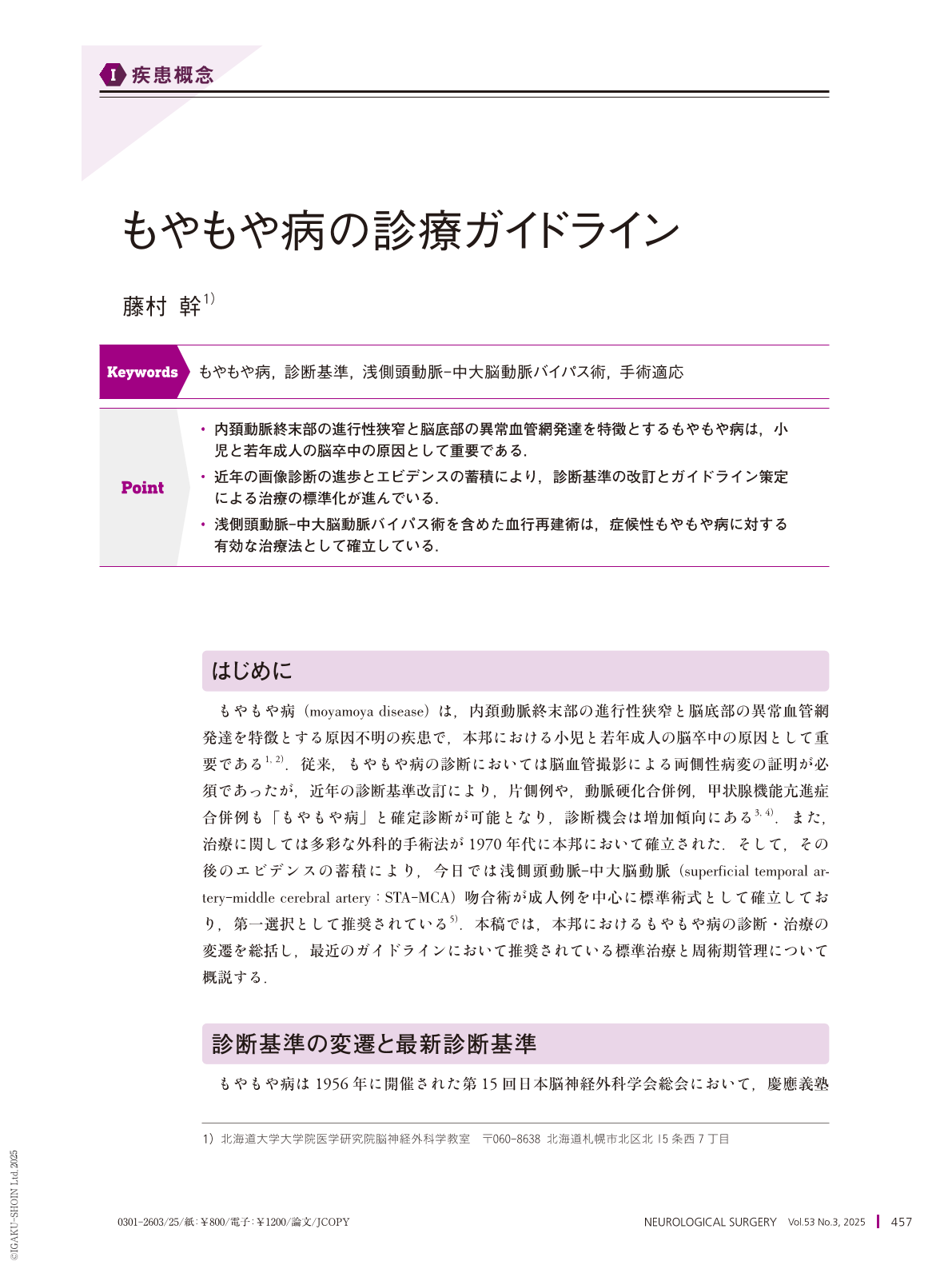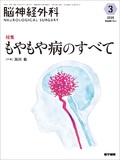Japanese
English
- 有料閲覧
- Abstract 文献概要
- 1ページ目 Look Inside
- 参考文献 Reference
Point
・内頚動脈終末部の進行性狭窄と脳底部の異常血管網発達を特徴とするもやもや病は,小児と若年成人の脳卒中の原因として重要である.
・近年の画像診断の進歩とエビデンスの蓄積により,診断基準の改訂とガイドライン策定による治療の標準化が進んでいる.
・浅側頭動脈-中大脳動脈バイパス術を含めた血行再建術は,症候性もやもや病に対する有効な治療法として確立している.
Moyamoya disease(MMD) is a rare cerebrovascular disease characterized by progressive stenosis of the internal carotid artery terminus and an abnormal formation of a vascular network at the base of the brain. Superficial temporal artery-middle cerebral artery(STA-MCA) bypass, either as a direct or combined revascularization procedure, is a reasonable management choice for patients with symptomatic MMD. STA-MCA bypass prevents cerebral ischemic attacks by improving cerebral blood flow. Recent evidence further suggests that direct revascularization reduces the potential risk of rebleeding in patients with MMD with posterior hemorrhage who have an extremely high annual rebleeding rate. Despite the favorable long-term outcomes of STA-MCA bypass, cerebral hyperperfusion syndrome is a potential complication of this procedure that can result in focal neurologic deficits and/or delayed intracerebral hemorrhage. Therefore, recent guideline recommendations indicate that STA-MCA bypass is a reasonable choice for symptomatic patients with MMD, together with intensive perioperative care for blood pressure control.

Copyright © 2025, Igaku-Shoin Ltd. All rights reserved.


